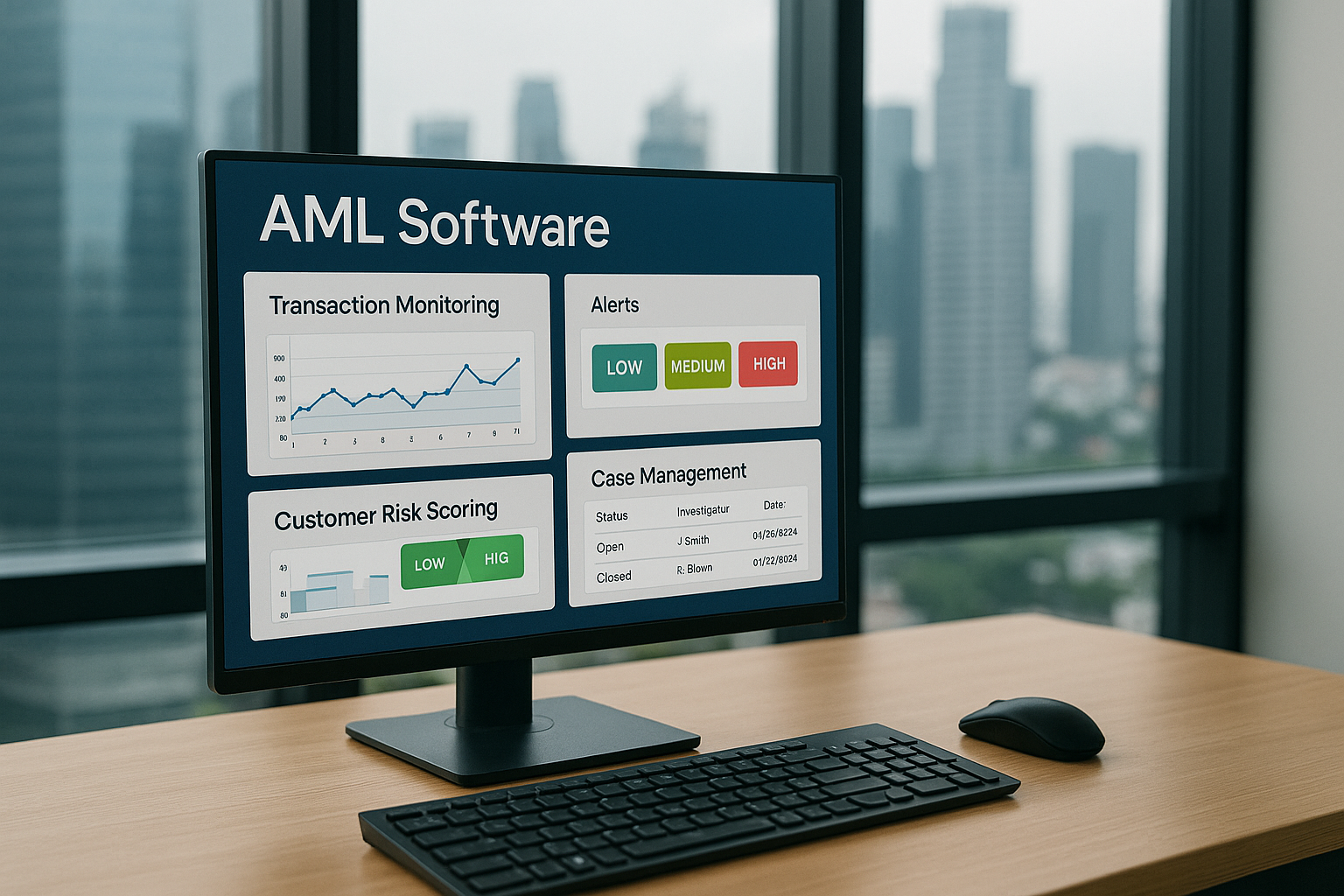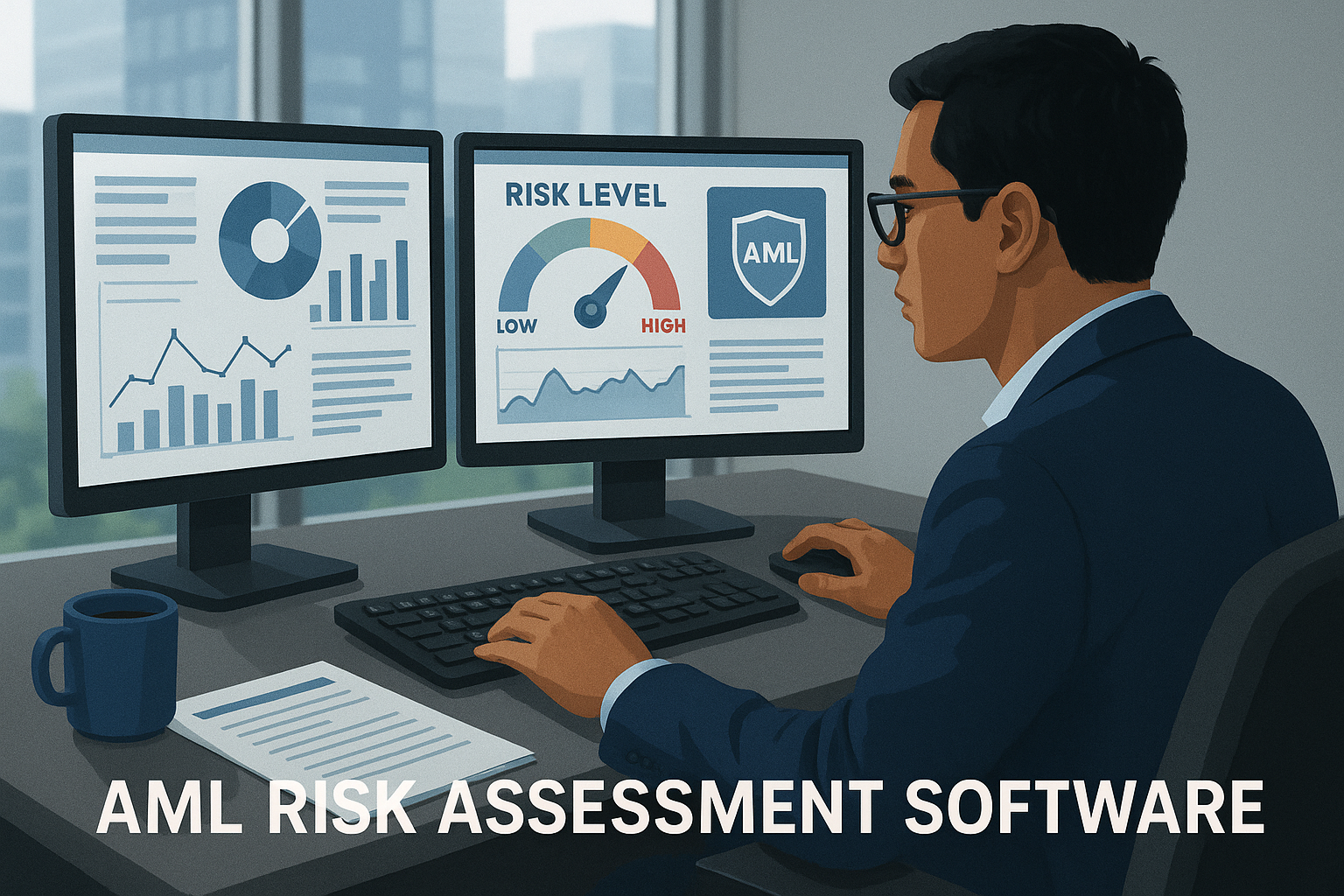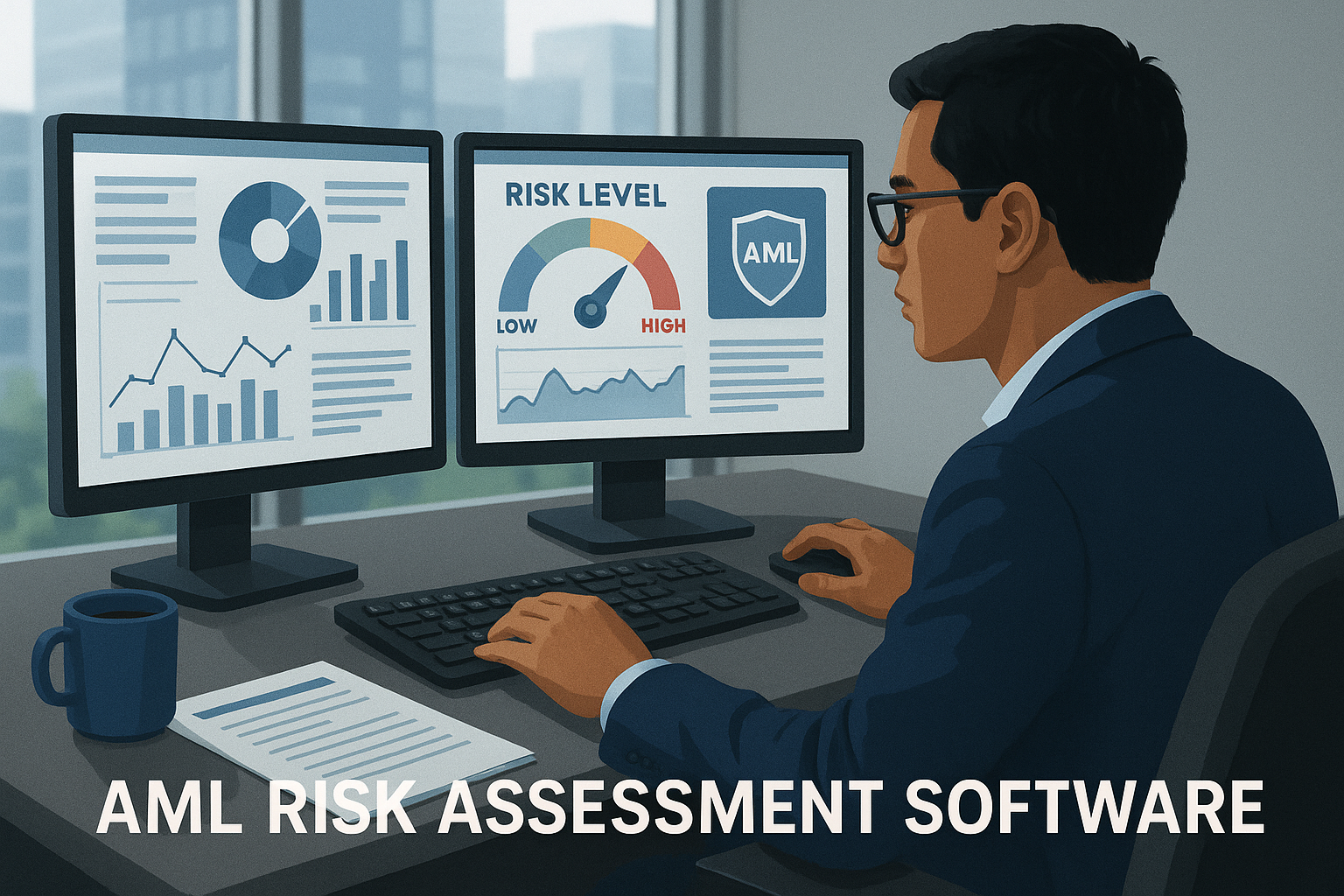Beyond Compliance: How Next-Gen AML Technology Solutions Are Rewriting the Rules of Financial Crime Prevention
.svg)
Financial institutions aren’t just fighting money laundering anymore — they’re racing to build systems smart enough to see it coming.
Introduction
Across the Philippines, financial crime is evolving faster than compliance teams can keep up. As digital payments, remittances, and cross-border transactions surge, new channels for laundering illicit funds are emerging. Money mule networks, online investment scams, and crypto-linked laundering are exploiting speed and scale — overwhelming traditional anti-money laundering (AML) systems.
The challenge isn’t just about staying compliant anymore. It’s about staying ahead.
Legacy systems built on static rules and limited visibility can’t cope with today’s dynamic risks. What’s needed now are next-generation AML technology solutions — intelligent, connected, and adaptable systems that learn from experience, detect context, and evolve with every investigation.
These aren’t futuristic ideas. They’re already reshaping compliance operations across Philippine banks and fintechs.

The New Reality of Financial Crime
The Philippines has made significant progress in strengthening its AML and CFT (counter-financing of terrorism) framework. The Anti-Money Laundering Council (AMLC) and the Bangko Sentral ng Pilipinas (BSP) have rolled out risk-based compliance requirements, urging financial institutions to implement smarter, data-driven monitoring.
But with innovation comes complexity.
- Digital payment adoption is skyrocketing, creating faster transaction flows — and faster opportunities for criminals.
- Cross-border crime syndicates are operating seamlessly across remittance and e-wallet platforms.
- New predicate crimes — from online fraud to crypto scams — are adding layers of sophistication.
- Regulatory expectations are evolving toward explainable AI and traceable risk management.
In this environment, compliance isn’t a checkbox. It’s a constant race against intelligent adversaries. And the institutions that thrive will be those that turn compliance into a strategic capability — powered by technology, collaboration, and trust.
What Defines a Modern AML Technology Solution
The term AML technology solutions has shifted from describing static compliance tools to encompassing a full spectrum of intelligent, integrated capabilities.
Today’s best AML systems share five defining traits:
1. Unified Intelligence Layer
They connect data across silos — customer onboarding, transaction monitoring, screening, and risk scoring — into a single, dynamic view. This eliminates blind spots and allows compliance teams to understand behaviour holistically.
2. AI-Driven Analytics
Modern AML systems leverage machine learning and behavioural analytics to identify subtle, previously unseen patterns. Instead of flagging rule breaches, they evaluate intent — learning what “normal” looks like for each customer and detecting deviations in real time.
3. Agentic AI Copilot
Next-generation AML tools include Agentic AI copilots that support investigators through reasoning, natural-language interaction, and context-driven insights. These copilots don’t just answer queries — they understand investigative goals.
4. Federated Learning Framework
To stay ahead of emerging threats, financial institutions need collective intelligence. Federated learning allows model training across institutions without data sharing, preserving privacy while expanding detection capabilities.
5. Explainability and Governance
Regulators and auditors demand transparency. Modern AML platforms must provide clear audit trails — explaining every decision, risk score, and alert with evidence and traceable logic.
Together, these principles redefine how compliance teams operate — from reactive detection to proactive prevention.
Why Legacy Systems Fall Short
Many Philippine institutions still rely on legacy AML systems designed over a decade ago. These systems, while once reliable, are now struggling under the demands of real-time payments, open finance, and cross-border ecosystems.
Key Limitations:
- Rigid rules-based models: They can’t adapt to new typologies or behaviours.
- High false positives: Excessive alerts dilute focus and consume investigator bandwidth.
- Fragmented data sources: Payments, wallets, and remittances often sit in separate systems.
- Manual reviews: Analysts spend hours reconciling incomplete data.
- Lack of scalability: Growing transaction volumes strain system performance.
The result is predictable: operational inefficiency, regulatory exposure, and rising compliance costs. In today’s environment, doing more of the same — faster — isn’t enough. What’s needed is intelligence that evolves with the threat landscape.
The Tookitaki Model — A Holistic AML Technology Solution
Tookitaki’s FinCense represents the evolution of AML technology solutions. It’s an end-to-end, AI-driven compliance platform that connects monitoring, investigation, and intelligence sharing into a single ecosystem.
FinCense is built to serve as the Trust Layer for financial institutions — enabling them to detect, investigate, and prevent financial crime with accuracy, transparency, and speed.
Core Components of FinCense
- Transaction Monitoring: Real-time detection of suspicious behaviour with adaptive risk models.
- Name Screening: Accurate identification of sanctioned or high-risk entities with minimal false positives.
- Customer Risk Scoring: Dynamic profiling based on transaction behaviour and risk exposure.
- Smart Disposition Engine: Automated case summarisation and investigation narration.
- FinMate (Agentic AI Copilot): A virtual assistant that helps investigators interpret, summarise, and act faster.
Each module interacts seamlessly, supported by federated learning and continuous feedback loops. Together, they create a compliance environment that is not only reactive but self-improving.
Agentic AI — The Human-AI Alliance
Agentic AI marks a turning point in the evolution of AML systems. Unlike traditional AI, which passively analyses data, Agentic AI can reason, plan, and act in collaboration with human investigators.
How It Works in FinCense
- Natural-Language Interaction: Investigators can ask the system questions like “Show all accounts linked to suspicious remittances in the last 30 days.”
- Proactive Reasoning: The AI suggests potential connections or red flags before they are manually identified.
- Summarisation and Guidance: Through FinMate, the AI generates draft narratives, summarises cases, and provides context for each alert.
This approach transforms how compliance teams work — reducing investigation time, improving accuracy, and building confidence in every decision.
Agentic AI isn’t replacing human expertise; it’s magnifying it. It brings intuition and efficiency together, ensuring compliance teams focus on judgment, not just data.
Collective Intelligence — The Power of the AFC Ecosystem
Compliance is most effective when knowledge is shared. That’s the philosophy behind the Anti-Financial Crime (AFC) Ecosystem — Tookitaki’s collaborative platform that connects AML professionals, regulators, and financial institutions across Asia.
What It Offers
- A library of typologies, red flags, and scenarios sourced from real-world cases.
- Federated Insight Cards — system-generated reports summarising new typologies and detection indicators.
- Regular contributions from AML experts, helping institutions stay updated with evolving risks.
By integrating the AFC Ecosystem into FinCense, Tookitaki ensures that AML models remain current and regionally relevant. Philippine banks, for instance, can immediately access typologies related to money mule networks, online scams, or remittance layering, and adapt their monitoring systems accordingly.
This collective intelligence model makes every member stronger — creating an industry-wide shield against financial crime.
Case in Focus: Philippine Bank’s Digital Transformation
When a major Philippine bank and wallet provider migrated from its legacy FICO system to Tookitaki’s FinCense Transaction Monitoring, the results were transformative.
Within months, the institution achieved:
- >90% reduction in false positives
- 10x faster deployment of new scenarios, improving regulatory readiness
- >95% alert accuracy, ensuring high-quality investigations
- >75% reduction in alert volume, while processing 1 billion transactions and screening over 40 million customers
These outcomes were achieved through FinCense’s adaptive AI models, seamless integration, and out-of-the-box scenarios from the AFC Ecosystem.
Tookitaki’s consultants also played a pivotal role — providing technical expertise, training client teams, and helping prioritise compliance-critical features. The result was a smooth transition that set a new benchmark for AML effectiveness in the Philippines.

Key Benefits of Tookitaki’s AML Technology Solutions
1. Smarter Detection
Advanced AI and federated learning identify subtle patterns and anomalies that traditional systems miss. The technology continuously evolves with new data, reducing blind spots and emerging risk exposure.
2. Operational Efficiency
By automating repetitive tasks and prioritising high-risk cases, compliance teams experience drastic improvements in productivity — freeing time for complex investigations.
3. Regulatory Readiness
FinCense ensures that every detection, decision, and alert is explainable and auditable. Built-in model governance allows institutions to meet regulatory scrutiny with confidence.
4. Collaborative Intelligence
The AFC Ecosystem keeps detection logic updated with typologies from across Asia, enabling Philippine institutions to anticipate risks before they strike locally.
5. Future-Proof Architecture
Cloud-ready and modular, FinCense scales effortlessly with transaction volumes. Its API-first design supports easy integration with existing systems and future innovations.
The Future of AML Technology
As the financial sector moves toward real-time, open, and interconnected systems, AML technology must evolve from reactive compliance to predictive intelligence.
Emerging Trends to Watch
- Predictive AI: Systems that forecast suspicious activity before it occurs.
- Blockchain Analytics Integration: Enhanced visibility into crypto-linked money flows.
- Cross-Border Collaboration: Federated intelligence frameworks spanning regulators and private institutions.
- AI Governance Standards: Alignment with explainability and fairness principles under global regulatory frameworks.
Agentic AI will be central to this future — enabling compliance teams to not only interpret data but reason with it, combining automation with accountability.
In the Philippines, this means financial institutions can leapfrog legacy systems and become regional leaders in compliance innovation.
Conclusion: Building a Smarter, Fairer Compliance Future
The definition of compliance is changing. No longer a back-office function, it has become a strategic differentiator — defining how financial institutions build trust and protect customers.
Next-generation AML technology solutions, powered by Agentic AI and collective intelligence, are helping institutions like those in the Philippines shift from reactive detection to proactive prevention.
Through Tookitaki’s FinCense and FinMate, compliance teams now have a complete ecosystem that connects human expertise with machine intelligence, real-time monitoring with explainability, and individual insights with industry collaboration.
The next era of AML won’t be measured by how well financial institutions catch crime — but by how effectively they prevent it.
Experience the most intelligent AML and fraud prevention platform
Experience the most intelligent AML and fraud prevention platform
Experience the most intelligent AML and fraud prevention platform
Top AML Scenarios in ASEAN

The Role of AML Software in Compliance

The Role of AML Software in Compliance









